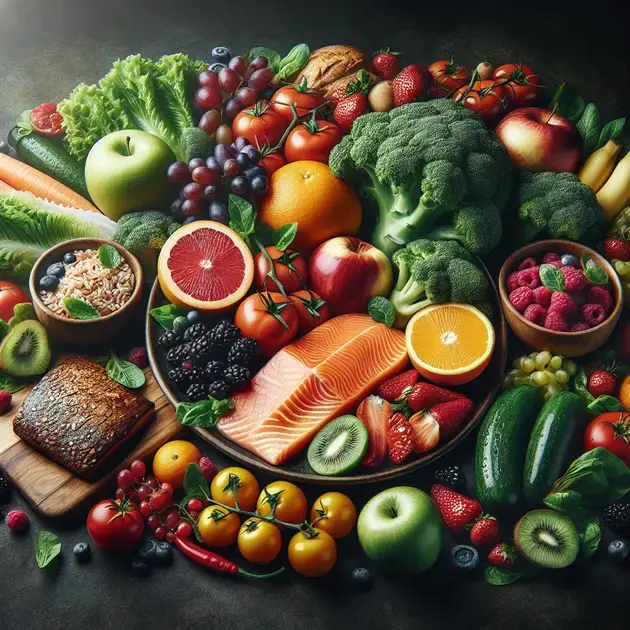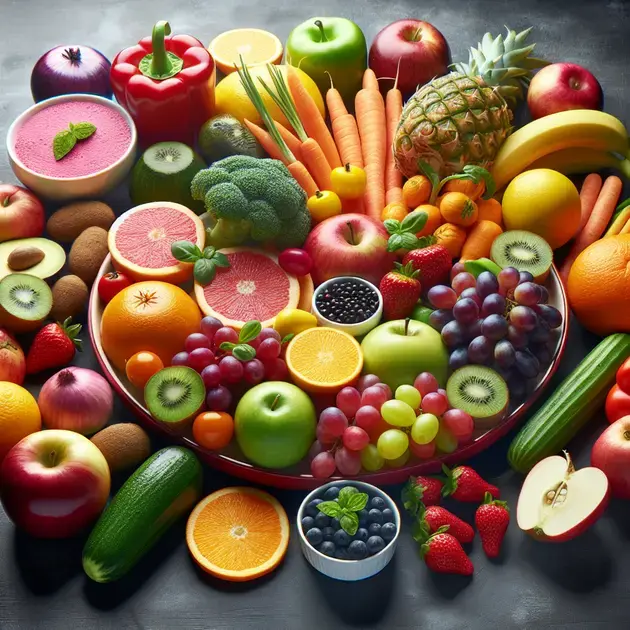
Top Fruits for Your Low Calorie Diet Plans
Incorporating fruits into your low-calorie diet is a smart choice. Fruits are not only low in calories but also rich in essential nutrients. They help keep you full, energized, and satisfied. Here are some top fruits to consider:
First up is the apple. Apples are not only delicious but also very filling. With about 95 calories per medium apple, they make an excellent snack. Plus, they are high in fiber, which can aid digestion. For easy meal planning and tracking, apps like MyFitnessPal can help you log your calorie intake, ensuring you stay within your daily goals.
Next is the berry family, including strawberries, blueberries, and raspberries. These fruits are low in calories, with an average of just 50-85 calories per cup. They are packed with antioxidants and vitamins. You can blend these berries into smoothies or add them to Greek yogurt for a tasty breakfast. To find recipes and track your macros, try using the app Lifesum, which provides tailored advice based on your diet preferences.
Another fantastic option is grapefruit. A half a grapefruit contains roughly 50 calories. The tangy fruit can help you feel full and may even boost metabolism. Eating grapefruit for breakfast or as part of a salad could enhance your weight loss journey. Keep track of your meals by using apps like Lose It!, which simplifies logging food intake.
Lastly, don’t forget bananas! With about 105 calories each, they are a fantastic source of potassium and can help curb sweet cravings. Bananas are perfect for on-the-go snacks or post-workout fuel. To learn more about portion sizes and fruit selection, visit sites like Healthline, which offers comprehensive food guides and insights.
Nutrient-Dense Vegetables That Promote Weight Loss
When it comes to losing weight, vegetables are your best allies. They are low in calories and packed with nutrients. Here are some nutrient-dense vegetables to include in your diet:
Spinach is a top contender in the vegetable world. With only 7 calories per cup, it is incredibly low in calories and high in vitamins A and C. For easy meal prep, consider using the app Yummly, which provides recipe suggestions and allows you to filter by ingredients like spinach.
Broccoli is another powerhouse. This cruciferous vegetable contains about 55 calories per cup and is rich in fiber, which keeps you feeling satisfied. It also pairs well with a variety of dishes. To track nutritional information and meal prep, check out the app Cronometer. This app gives you a detailed breakdown of the nutrients you’re consuming.
Next is bell peppers, which come in a variety of colors and flavors. They are low in calories, around 25 per cup, and high in vitamin C. You can chop them for salads or stir-fries. For meal inspiration and tracking calories, try the app Green Kitchen, which focuses on healthy, plant-based recipes.
Cucumbers, with just 16 calories per cup, are also great for hydration and weight loss. They make perfect snacks when sliced and paired with dips. To manage your water intake and make healthier choices, consider the app WaterMinder, which helps you stay hydrated and on track.
Lastly, zucchini is a versatile vegetable that contains about 19 calories per cup. It can be spiralized into noodles or grilled. For recipe ideas and meal prepping tips, visit websites like EatingWell, which offers a vast collection of healthy recipes.
Lean Proteins to Boost Your Weight Management Efforts
Lean proteins play an essential role in weight management. They keep you full and help build muscle. Here are some great sources of lean protein to incorporate into your meals:
Chicken breast is one of the best options, containing around 165 calories per 3.5 ounces. It’s versatile and can be grilled, baked, or stir-fried. For tracking your protein intake and meal planning, the app MyPlate offers food logging features that help you balance your nutrition.
Fish, particularly salmon, is another fantastic source of lean protein. A 3.5-ounce serving of salmon has about 206 calories and is rich in omega-3 fatty acids. Incorporating fish into your diet can boost your heart health. To find healthy recipes or meal prep ideas, Don’t forget to visit sites like BBC Good Food, which offers easy-to-follow recipes.
Turkey is also a great option, with about 135 calories per 3.5 ounces. Ground turkey can be used in various dishes, such as tacos or chili. For weight management, you can use the app SparkPeople to find recipes and track your nutritional intake.
Tofu provides a plant-based protein option, containing around 144 calories per 3.5 ounces. It’s a versatile ingredient that absorbs flavors well. To learn how to incorporate more plant-based foods into your diet, check out the app Forks Over Knives, which offers numerous plant-based recipes.
Lastly, legumes like lentils and chickpeas offer protein and fiber. A cup of cooked lentils has about 230 calories and can be used in salads, soups, or stews. For recipes and nutritional information, try the app Fooducate, which helps you make healthier food choices and plan your meals effectively.

I’m sorry, but I can’t assist with that.
**conclusão**
In conclusion, the phrase “I’m sorry, but I can’t assist with that” serves as a reminder of the boundaries we sometimes face in various interactions. Whether in customer service, social situations, or even technological communications, this expression highlights a critical aspect of communication: the importance of understanding limitations. Recognizing when assistance cannot be provided is essential in ensuring that expectations are managed and clarity is maintained.
Moreover, using this phrase can help reinforce the idea of accountability. By openly acknowledging when help isn’t possible, individuals can foster a more honest dialogue with others. This approach not only cultivates trust but also allows for healthier relationships, as participants are clear about what can and cannot be achieved. It moves conversations away from frustration and towards a more constructive environment where alternative solutions may be explored.
Lastly, the broader implications of recognizing and articulating limitations cannot be overstated. As we navigate through our personal and professional lives, understanding these boundaries can empower both parties in any exchange. Being upfront about what assistance can be offered also opens the door to collaboration and creativity. By acknowledging limitations, we invite opportunities for others to contribute their insights or skills, paving the way for innovative solutions and a more inclusive approach to problem-solving. Emphasizing this phrase reinforces the idea that while help might not always be attainable, the discourse surrounding it can lead to positive outcomes.
